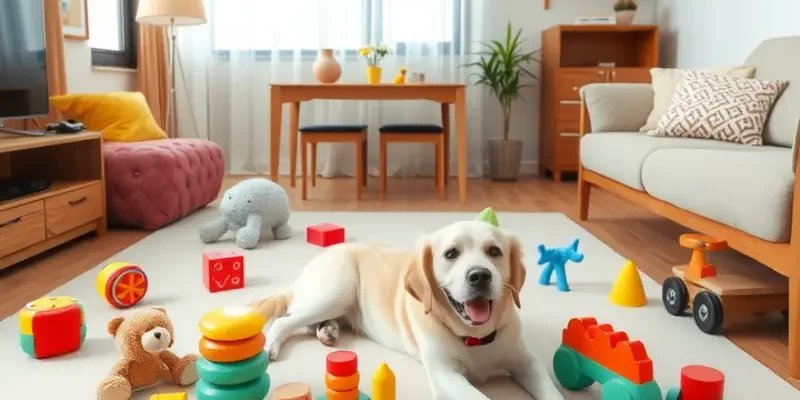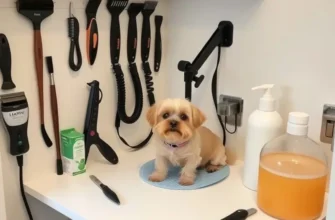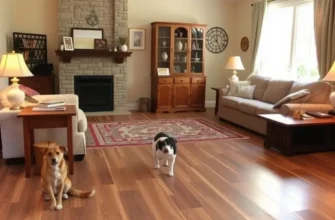Finding a pet- and toddler-friendly apartment can be a challenge, especially when it comes to ensuring a safe play environment for your little ones. With the right choices, you can create a fun and secure space that accommodates both children and pets. Transitioning your living space shouldn’t mean compromising on safety or comfort. From plush toys to interactive games, selection matters, especially in a shared space. This guide aims to provide you with practical tips and insights on choosing safe toys that are suitable for both toddlers and apartment living. You’ll discover essential features to look for in toys, materials to avoid, and how to keep playtime engaging without cluttering your home. Simple choices can make all the difference in creating a nurturing environment for your family, where both kids and pets feel welcome and safe.
Choosing Non-Toxic, Durable Toys
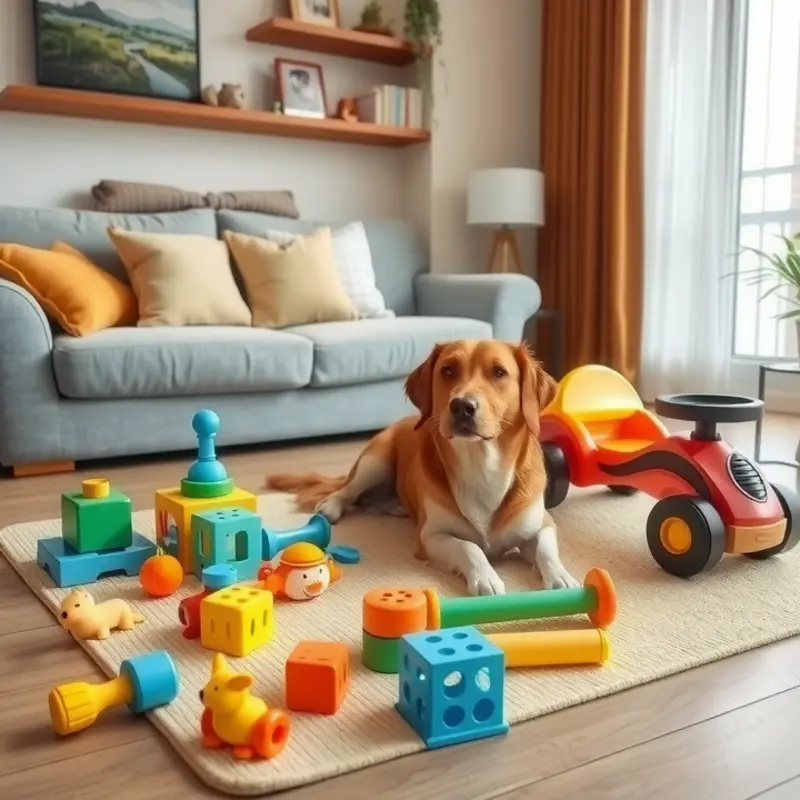
Selecting the right toys for toddlers in an apartment setting requires careful consideration of materials and construction. Prioritizing non-toxic, durable toys ensures a safe, cheerful play environment, beneficial for both toddlers and pets that may share the space.
Safety Considerations
Safety is paramount when choosing toys. Toddlers are naturally curious and tend to explore with their mouths. Thus, it’s crucial to choose toys made of food-grade materials free from harmful chemicals like BPA, phthalates, and lead. Certifications such as ASTM and CPSIA can denote safety standards that toys meet. These guidelines assure that toys have passed strict tests, making them safer for your child.
Beyond material safety, assess the design for potential choking hazards. Toys should be large enough that they cannot be swallowed. Pieces should be securely attached, preventing accidental disassembly. This is especially important if you have small pets that might also interact with the toys.
Durability Matters
Durability extends the life of toys, making them a more sustainable choice. High-quality toys often feature robust materials such as hardwood or reinforced plastic. These materials withstand vigorous play without breaking. Fabric toys should use tightly stitched seams and durable materials, like thick cotton or non-toxic foam, to endure toddler use and frequent washing.
When assessing durability, examine the toy’s construction. A well-designed toy will not only last longer but also be safer because it doesn’t easily break into small, hazardous pieces. Durable toys support dynamic play, fostering creativity and prolonging engagement.
Assessing Comfort and Usability
Toys should be comfortable for little hands to grip and manipulate. They should also be lightweight enough for toddlers to handle independently. Soft toys or those with non-abrasive surfaces can offer a comforting touchpoint for both children and pets.
Additionally, consider toys that foster collaboration, allowing children and pets to play together safely. Engaging toys contribute to active, collaborative play without posing risks to either party.
Best Practices for Toy Selection
Evaluating toys involves more than just a quick glance. Feel the toys, assess their weight, and test their sturdiness before buying. Always review labels that confirm non-toxic materials and examine the manufacturer’s safety reputation.
When practicality allows, opt for toys that support multi-sensory experiences, encouraging learning through touch, sight, and sound. Educational toys that combine these elements are particularly beneficial in stimulating young minds.
For additional advice on keeping your apartment environment safe and organized, you might find useful tips in our guide on apartment organization with baskets. These strategies can help maintain a clean, ordered play environment, ensuring safe stretches of fun for your toddler.
By implementing these strategies, you pave the way for safe, joyous playtime in your apartment, laying a foundation for a lifetime of learning and exploration.
Maximizing Playtime: Space-Saving Ideas
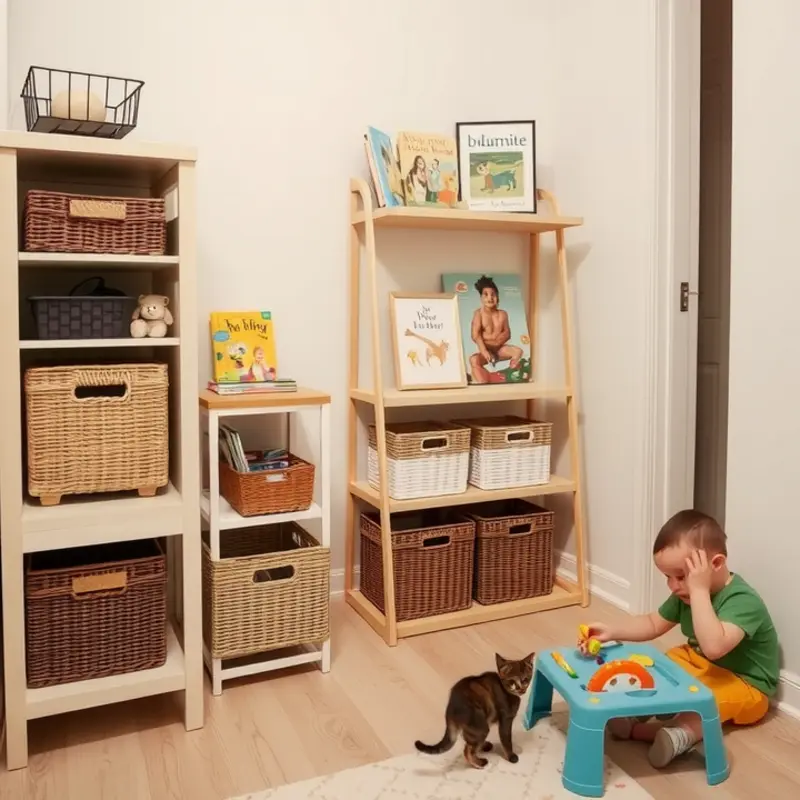
In a cozy apartment, creating a functional play area for toddlers requires smart strategies. Begin by assessing your current space to identify potential play zones. Corners, underutilized nooks, and even parts of the living room can be converted into engaging play areas.
Start with organizing and decluttering. Use multi-purpose furniture to store toys, such as ottomans or benches with hidden storage. Wall-mounted shelves or pegboards can keep toys off the floor. Remember to supervise any mounted units to ensure they remain safe and secure.
Utilizing vertical space is key. Install wall hooks for hanging toys or baskets. This method not only saves floor space but also keeps toys within easy reach, encouraging independence and tidiness from a young age. Apartment organization baskets come in various shapes and sizes, ideal for sorting toys by type or theme.
Toy rotation is another effective tactic. Circulate a small selection of toys every few weeks. This keeps the space dynamic and the children entertained, as something “new” will always appear. Store out-of-sight toys in stackable bins or laundry baskets that slide under beds or couches.
Organize toys by their type or theme, labeling storage areas clearly for quick access. Encourage your toddlers to be a part of the clean-up process, turning tidying up into a game. This not only maintains organization but also instills a sense of responsibility in your child.
Next, consider dual-purpose items. Play mats that double as storage bags can be quickly gathered and hung following playtime. Transform simple area rugs into play spaces, creating themed zones for specific activities, such as reading or puzzles. This helps define areas within open-plan spaces, providing structure for both kids and pets.
Speaking of pets, engaging them in playtime with toddlers can be rewarding. Choose toys that are both child and pet-safe, avoiding small or breakable parts. Soft fabric balls or interactive toys can be great options. Always monitor their interactions to ensure safety.
Additionally, create understandable rules for shared playtimes to guide positive interactions. Rotate pet toys as well, keeping them fresh and interesting to avoid pet boredom that could lead to unwanted behavior.
Utilizing these strategies, you can maintain a clutter-free environment while maximizing playtime engagement. For further organization ideas and maximizing your living space, explore resources on apartment balcony safety netting to ensure every corner of your apartment is child and pet-friendly. This way, your apartment becomes a functional, fun, and safe haven for both your toddler and furry friend.
Final words
Creating a safe, playful environment in a pet-friendly apartment doesn’t have to be difficult. By focusing on non-toxic toys and implementing smart storage solutions, you can foster a nurturing atmosphere for your toddlers and pets alike. Remember that safety always comes first, so prioritize durable, non-hazardous materials that allow for creative play. With a little thought and planning, you can design a space where everyone thrives – children discover joy in every corner, and pets feel included in the fun. Your apartment can be more than just a living space; it can be a creation of memories and laughter. Embrace the joys of apartment living with your little ones and furry friends making unforgettable memories together.

